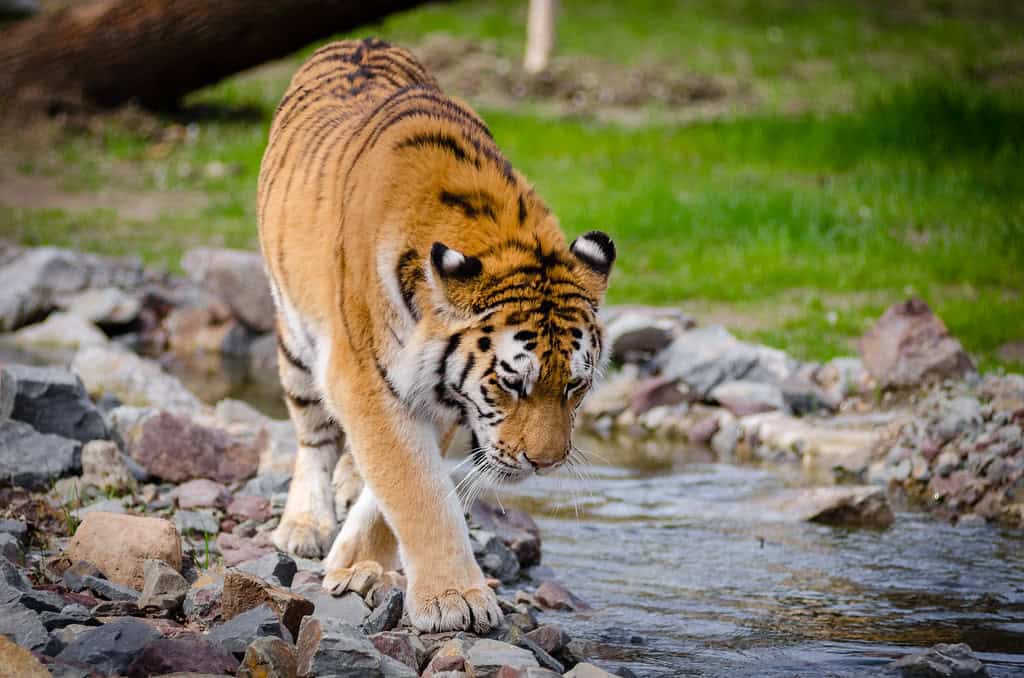Tigers, with their striking orange coats and powerful presence, represent one of nature’s most magnificent and endangered species. Once roaming across vast swathes of Asia, these apex predators now occupy just 7% of their historical range. For wildlife enthusiasts and conservation-minded travelers, witnessing these majestic big cats in their natural habitat is an unforgettable experience that combines adventure with the sobering reality of their threatened existence. This article explores the most spectacular locations around the world where you can still observe wild tigers, highlighting conservation efforts, best viewing seasons, and practical visitor information for each destination.
Ranthambore National Park, India: The Royal Bengal Tiger’s Fortress

Ranthambore National Park in Rajasthan stands as one of India’s most celebrated tiger sanctuaries, where these magnificent predators roam among ancient ruins of the 10th-century Ranthambore Fort. Once a hunting ground for maharajas, this 1,334 square kilometer reserve now protects approximately 70 Bengal tigers. What makes Ranthambore particularly special is its relatively open landscape of deciduous forest and grassland, offering some of the best tiger viewing opportunities in the world. Famous tigers like Machli (who lived to 19 years and became the world’s most photographed wild tiger) have made this park legendary among wildlife photographers.
The best time to visit is between October and June, with peak tiger sightings occurring during the hot months of April to June when water sources become limited and tigers concentrate around remaining water bodies. The park’s well-organized safari system operates morning and afternoon game drives in open jeeps or larger canters, guided by knowledgeable naturalists who understand tiger behavior and tracking. Beyond tigers, visitors can also spot leopards, sloth bears, sambar deer, and over 300 bird species against the backdrop of dramatic rocky outcrops and ancient banyan trees.
Bandhavgarh National Park, India: The Highest Tiger Density

Located in the central Indian state of Madhya Pradesh, Bandhavgarh National Park boasts the highest density of Bengal tigers in the world. This relatively compact 448 square kilometer core area supports over 70 tigers, making sighting probability exceptionally high compared to other reserves. The park’s varied landscape of steep ridges, open meadows, and dense sal forest provides diverse habitats that tigers utilize throughout the day. Bandhavgarh’s tigers have been well-documented for generations, with famous lineages that park guides can often identify by their unique stripe patterns.
Morning safaris starting at dawn offer the best viewing opportunities, as tigers are more active in the cooler hours. The park operates from October to June, closing during the monsoon season. Bandhavgarh’s rich history is evident in its ancient ruins, including the 2,000-year-old Bandhavgarh Fort that sits atop the highest hill in the park. This combination of historical significance and exceptional wildlife viewing makes Bandhavgarh a premier destination for tiger enthusiasts. The park’s buffer zones also offer interesting interactions with local communities who have lived alongside tigers for generations.
Kaziranga National Park, India: Home to Tigers and Rhinos

Kaziranga National Park in the northeastern state of Assam presents a unique ecosystem where tigers share their habitat with the greater one-horned rhinoceros. While primarily known for having the world’s largest population of these rhinos, Kaziranga’s approximately 110 tigers remain largely elusive due to the tall elephant grass that dominates the landscape. This UNESCO World Heritage site spans over 430 square kilometers of floodplains, creating a nutrient-rich environment that supports high prey densities and consequently a healthy tiger population.
The best visiting time falls between November and April, avoiding the monsoon season when the park floods annually from the Brahmaputra River. These annual floods are crucial to maintaining the park’s unique ecosystem but make large areas inaccessible. Unlike other tiger reserves, Kaziranga offers elephant-back safaris in addition to jeep tours, providing a different perspective for wildlife viewing. The combination of grasslands, marshes, and dense forests creates diverse habitats for tigers and other wildlife. Camera trap studies have revealed that Kaziranga has one of the highest tiger densities in India, though the thick vegetation makes spotting them more challenging than in other parks.
Sundarbans National Park, India and Bangladesh: Tigers of the Mangroves
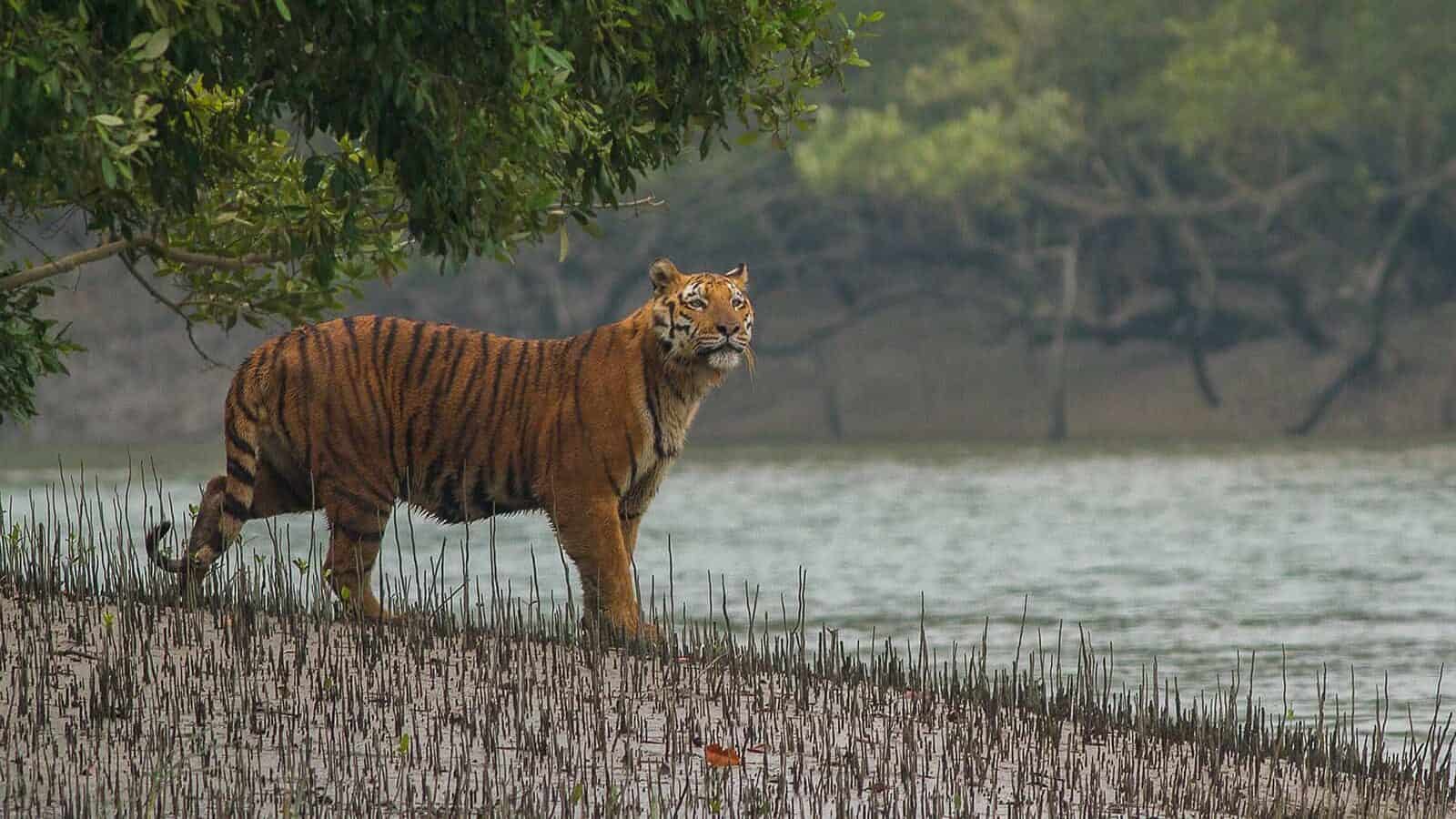
Straddling the border between India and Bangladesh, the Sundarbans forms the largest mangrove forest in the world and harbors a unique population of tigers that have adapted to a semi-aquatic lifestyle. These estimated 100 “swimming tigers” have developed distinctive behaviors not seen elsewhere, including swimming between islands, consuming fish and crabs, and drinking saline water. The labyrinthine waterways and dense mangrove vegetation make tiger sightings rare and unpredictable, but the mysterious atmosphere and knowledge that tigers are present create an unparalleled wilderness experience.
Boat safaris are the only way to explore this UNESCO World Heritage site, with the best visiting period being from December to February when temperatures are milder. The Sundarbans tigers have a complex relationship with local communities, with both tiger attacks on humans and human encroachment on tiger habitat creating conservation challenges. Despite these tensions, innovative programs like the Sundarbans Tiger Project work with local honey collectors and fishermen to reduce human-tiger conflict. The unique ecology of the Sundarbans, with its twice-daily tidal fluctuations and hurricane-prone geography, has shaped both the tigers and the human communities that share this extraordinary landscape.
Bardia National Park, Nepal: The Wilderness Experience

Bardia National Park represents Nepal’s largest and most undisturbed wilderness area, offering an authentic tiger viewing experience away from the crowds. Located in the country’s western lowlands, this 968 square kilometer park protects approximately 50 Bengal tigers along with other rare species like wild elephants and one-horned rhinoceros. What distinguishes Bardia is its remote location and limited tourism infrastructure, resulting in a more intimate connection with nature for those willing to make the journey. The park consists primarily of sal forest and riverine grasslands along the Karnali and Babai rivers, creating ideal tiger habitat.
The optimal visiting time spans from October to early March when the weather is dry and pleasant. Unlike more developed tiger destinations, Bardia offers walking safaris with armed guides—a thrilling if somewhat nerve-wracking way to experience tiger country. The park’s conservation success story is remarkable, with tiger numbers increasing substantially in recent years thanks to effective anti-poaching measures and habitat protection. Community-based conservation initiatives have engaged local Tharu people in protection efforts, creating sustainable livelihoods through ecotourism while safeguarding the park’s biodiversity.
Chitwan National Park, Nepal: The Conservation Success
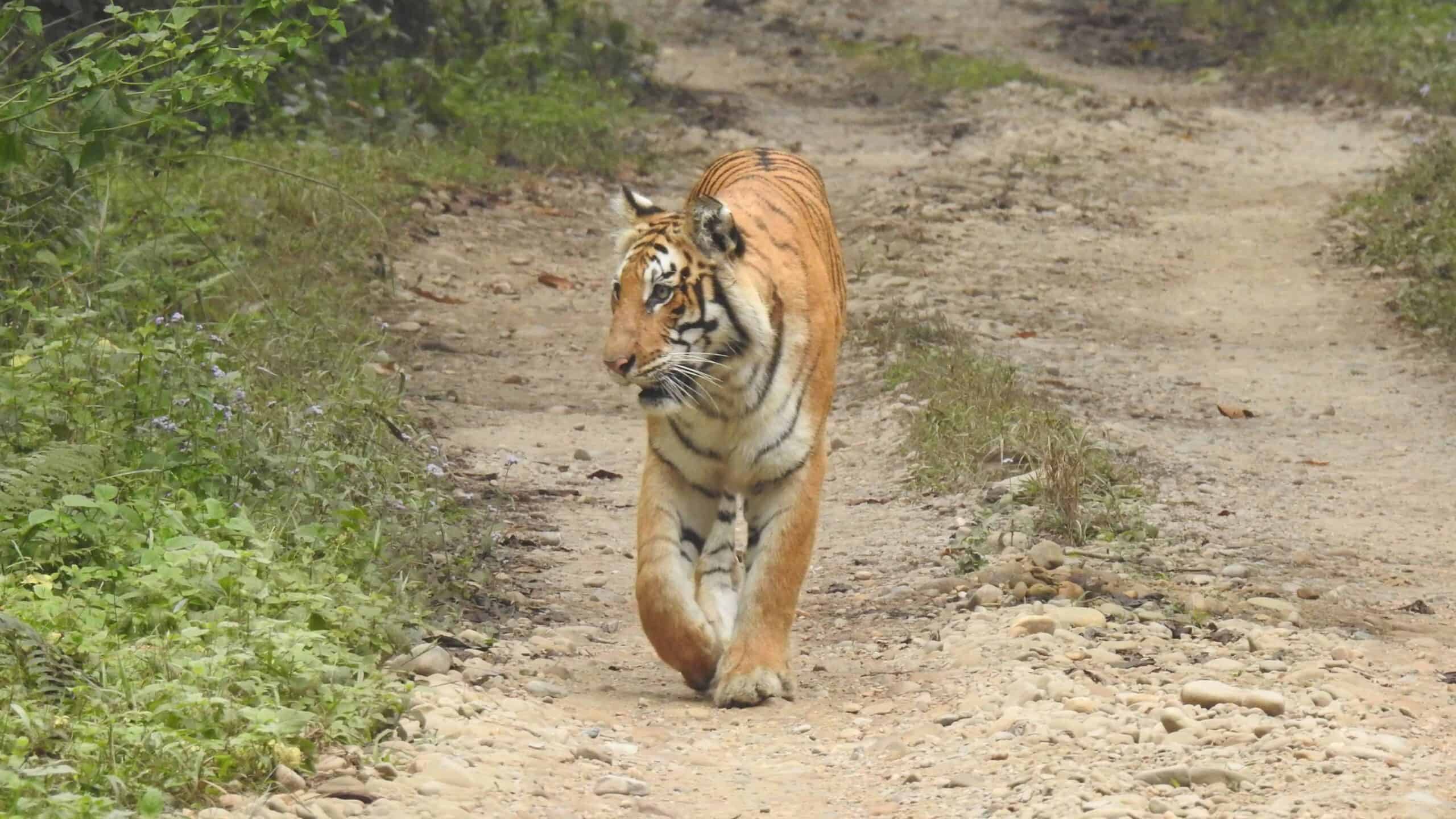
Nepal’s first national park, Chitwan has transformed from a royal hunting reserve to an international conservation success story. This UNESCO World Heritage site spans 932 square kilometers of subtropical lowlands and supports approximately 120 Bengal tigers—a population that has more than doubled in recent decades. The park’s diverse habitats include sal forests, grasslands, and riverine forests along the Rapti, Reu, and Narayani rivers. Chitwan offers varied safari options including jeep drives, walking tours with naturalist guides, and traditional dugout canoe rides that showcase different aspects of tiger habitat.
The best visiting season extends from October to March, avoiding the monsoon period when parts of the park become inaccessible. What makes Chitwan particularly special is its integration of cultural experiences with wildlife viewing, as the indigenous Tharu communities maintain traditional lifestyles alongside conservation initiatives. The park’s buffer zone management has become a model for balancing human needs with wildlife protection. Gharial crocodiles, one-horned rhinoceros, and over 550 bird species complement the tiger population, making Chitwan one of the most biologically rich protected areas in Asia. Morning elephant-back safaris provide excellent opportunities to spot tigers as they move through the tall grasslands.
Tadoba Andhari Tiger Reserve, India: The Emerging Star
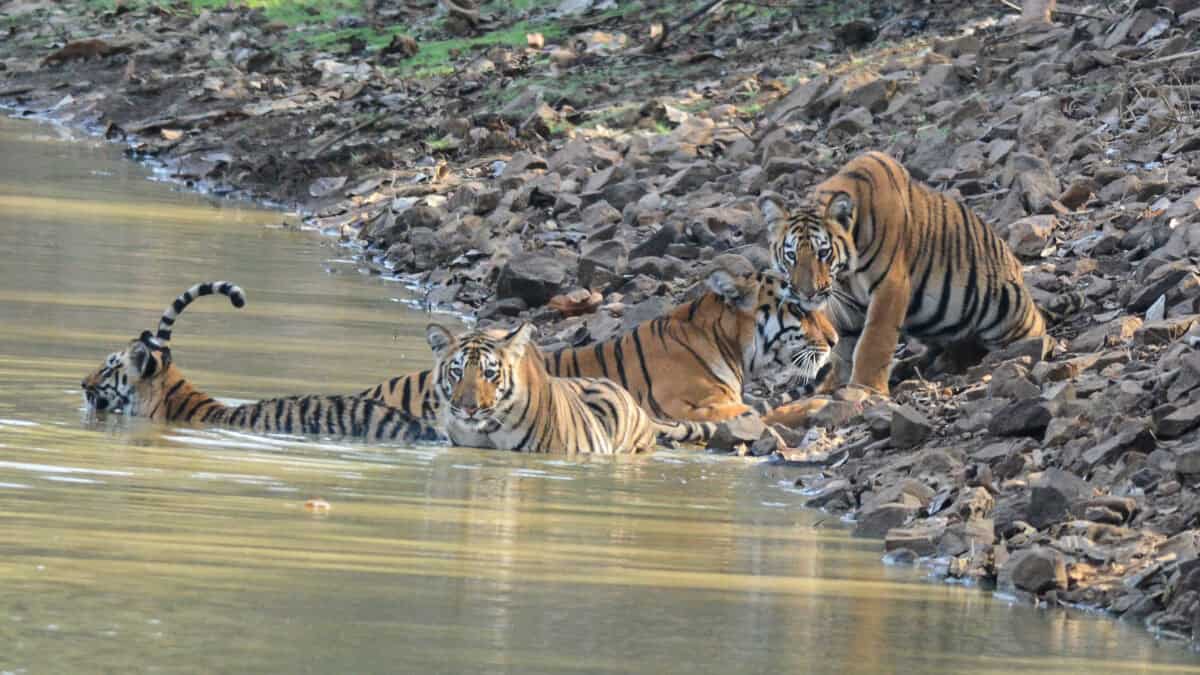
Relatively unknown compared to India’s famous tiger destinations, Tadoba Andhari Tiger Reserve in Maharashtra has emerged as a premier location for tiger sightings in recent years. Covering approximately 625 square kilometers of core area, this reserve supports over 80 tigers in a landscape dominated by teak forest and bamboo thickets. What distinguishes Tadoba is its less restrictive tourism model, allowing private vehicles with guides and offering longer safari hours than many other Indian reserves. The park features several large meadows and water bodies where tigers frequently make appearances, particularly during summer months.
The optimal visiting period spans from February to May when water scarcity concentrates wildlife around remaining water sources. Tadoba’s relatively flat terrain makes wildlife spotting easier than in more rugged reserves. The park has gained fame for remarkable sightings of tiger behaviors rarely observed elsewhere, including hunting, mating, and mothers with cubs. Several well-known tigresses like Maya and Sonam have become celebrities for their comfort around vehicles and frequent appearances with their cubs. Compared to more established parks, Tadoba offers excellent value and fewer crowds while maintaining high sighting rates, making it a hidden gem for tiger enthusiasts.
Kanha Tiger Reserve, India: The Inspiration for ‘The Jungle Book’

Kanha Tiger Reserve, spreading across 940 square kilometers in Madhya Pradesh, provided inspiration for Rudyard Kipling’s “The Jungle Book” and remains one of India’s most scenic tiger habitats. The landscape features a perfect balance of sal and bamboo forests interspersed with vast meadows locally known as “maidans,” creating ideal conditions for both tigers and visitors hoping to spot them. Approximately 80 tigers inhabit this reserve, which pioneered conservation efforts by saving the endangered barasingha (swamp deer) from extinction. Kanha’s beauty lies in its varied topography, from rolling hills to flat grasslands and dense forests.
The park remains open from October to June, with peak tiger sightings occurring in the hotter months of March through May. Kanha’s carefully managed tourism includes a limited number of vehicles per day and designated routes that minimize disturbance to wildlife while maximizing viewing opportunities. Beyond tigers, the park boasts healthy populations of leopards, sloth bears, wild dogs (dhole), and over 300 bird species. The Kanha Earth Lodge and other eco-friendly accommodations near the park provide exceptional naturalist guides who enhance the visitor experience through their knowledge of individual tigers and their territories. Morning safaris typically offer better photography conditions with soft light illuminating the misty meadows.
Way Kambas National Park, Indonesia: Realm of the Sumatran Tiger

Way Kambas National Park on the eastern coast of Sumatra provides critical habitat for the critically endangered Sumatran tiger (Panthera tigris sumatrae), the smallest tiger subspecies with only about 400-500 individuals remaining in the wild. This 1,300 square kilometer protected area consists primarily of lowland tropical forest and swamps, offering a completely different tiger habitat compared to the parks of India and Nepal. Sumatran tigers are notoriously elusive, making sightings extremely rare even for researchers who spend months in the field. What makes Way Kambas special is the opportunity to see evidence of these secretive predators through pugmarks, scratch marks on trees, and occasional vocalizations.
The best visiting time falls between June and September during the dry season when trails are more accessible. The park offers guided trekking and night safaris that focus on finding tiger sign rather than promising direct sightings. Way Kambas also houses the Sumatran Tiger Recovery Program and Breeding Center, where visitors can learn about conservation efforts even if they don’t encounter wild tigers. The park provides critical habitat not only for tigers but also for critically endangered Sumatran rhinos, elephants, and tapirs. Conservation challenges include illegal logging, poaching, and human-tiger conflict in surrounding communities, making visitor support particularly valuable for ongoing protection efforts.
Huai Kha Khaeng Wildlife Sanctuary, Thailand: Last Stronghold of Indochinese Tigers
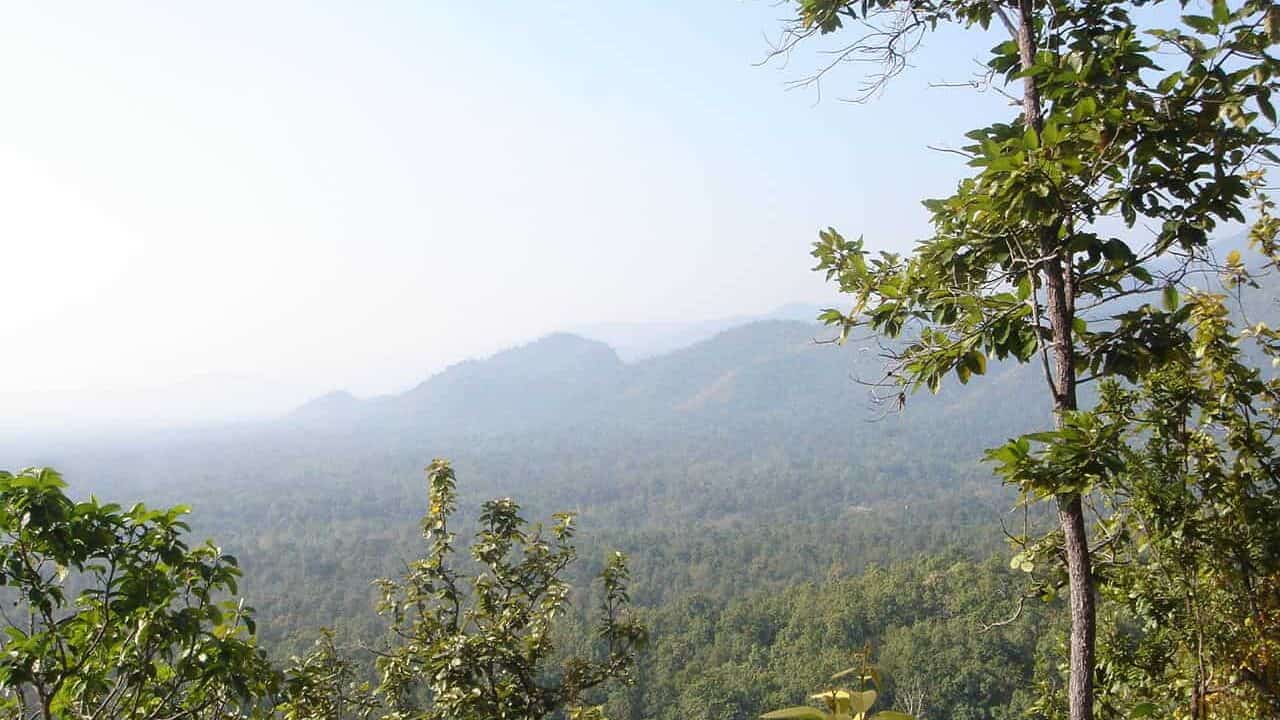
Huai Kha Khaeng Wildlife Sanctuary, part of Thailand’s Western Forest Complex and a UNESCO World Heritage site, represents one of the last viable habitats for the endangered Indochinese tiger (Panthera tigris corbetti). This 2,780 square kilometer protected area comprises diverse forest types including dry dipterocarp, mixed deciduous, and evergreen forests that support approximately 20-30 tigers. The sanctuary’s remoteness and limited accessibility have helped maintain its pristine condition and protect its wildlife from the poaching and habitat loss affecting other tiger ranges in Southeast Asia.
Visitor access is strictly controlled, with special permits required and guided tours mandatory, typically available from November to April during the dry season. Unlike the tiger tourism model in India, Huai Kha Khaeng focuses on conservation first, with tourism a secondary consideration. This means tiger sightings are exceptionally rare, but the opportunity to explore pristine tiger habitat and support critical conservation efforts makes it worthwhile for serious wildlife enthusiasts. The sanctuary employs innovative conservation techniques including intensive anti-poaching patrols, camera trap monitoring networks, and genetic studies to understand the tiger population. Recent increases in tiger numbers demonstrate the effectiveness of Thailand’s conservation approach in this critical landscape.
Sikhote-Alin Biosphere Reserve, Russia: Kingdom of the Amur Tiger

In the Russian Far East, the Sikhote-Alin Biosphere Reserve protects critical habitat for the Amur (or Siberian) tiger (Panthera tigris altaica), the largest tiger subspecies and the only one adapted to snow and extreme cold. This UNESCO World Heritage site spans 4,000 square kilometers of temperate forest ranging from coastal areas to high mountains, supporting approximately 20-30 tigers. These magnificent predators have enormous territories in this region, with a single male requiring up to 1,000 square kilometers. The reserve’s pristine wilderness includes Korean pine forests that produce nutritious pine nuts supporting both tigers and their prey species like wild boar and red deer.
Visiting this remote region requires careful planning, with summer and early autumn (June to September) offering the most accessible conditions. The reserve headquarters in Terney provides information on guided tours and wildlife tracking excursions. While tiger sightings are exceptionally rare, winter visits provide opportunities to follow tiger tracks in the snow with expert guides. The Amur tiger faced near extinction in the 1940s with fewer than 40 individuals remaining, but Russia’s conservation efforts have increased numbers to approximately 500-550 today. The international “Land of the Leopard” National Park nearby also supports Amur tigers along with critically endangered Amur leopards, creating a conservation complex of global importance.
The opportunity to witness wild tigers in their natural habitat represents one of wildlife tourism’s most profound experiences, combining adventure with conservation awareness. Each destination described offers unique landscapes, tiger subspecies, and viewing experiences—from the relatively accessible parks of central India to the remote wilderness areas of Russia and Indonesia. While tiger sightings can never be guaranteed, responsible tourism supports conservation efforts that determine whether these magnificent predators will survive for future generations.
When planning a tiger safari, selecting ethical tour operators who prioritize animal welfare and sustainable practices is essential. Responsible visitors maintain appropriate distances, follow park rules, and understand that their presence contributes financially to protection efforts. The continued existence of wild tigers depends on maintaining connected habitats, reducing human-tiger conflict, eliminating poaching, and supporting local communities who live alongside these predators.
Climate change now presents an additional threat to tiger habitats, particularly in low-lying areas like the Sundarbans where rising sea levels threaten to reduce available land. By choosing to visit these remarkable places, travelers not only fulfill personal dreams of encountering one of nature’s most iconic predators but also become stakeholders in their conservation. The wonder of seeing a wild tiger—even briefly—creates advocates for their protection far beyond the boundaries of the reserves where they still roam free.
As legendary conservationist George Schaller noted, “No one who looks into a tiger’s eyes can remain unmoved.” Through responsible tourism that prioritizes both the tiger’s welfare and the livelihoods of local communities, we can help ensure these eyes continue to shine in the wild forests of Asia for generations to come.
- What Horses Teach Us About Nonverbal Communication - August 25, 2025
- How a Breed’s Adaptability Fits Frequent Moves - August 25, 2025
- Meet the World’s Heaviest Flying Bird - August 25, 2025

